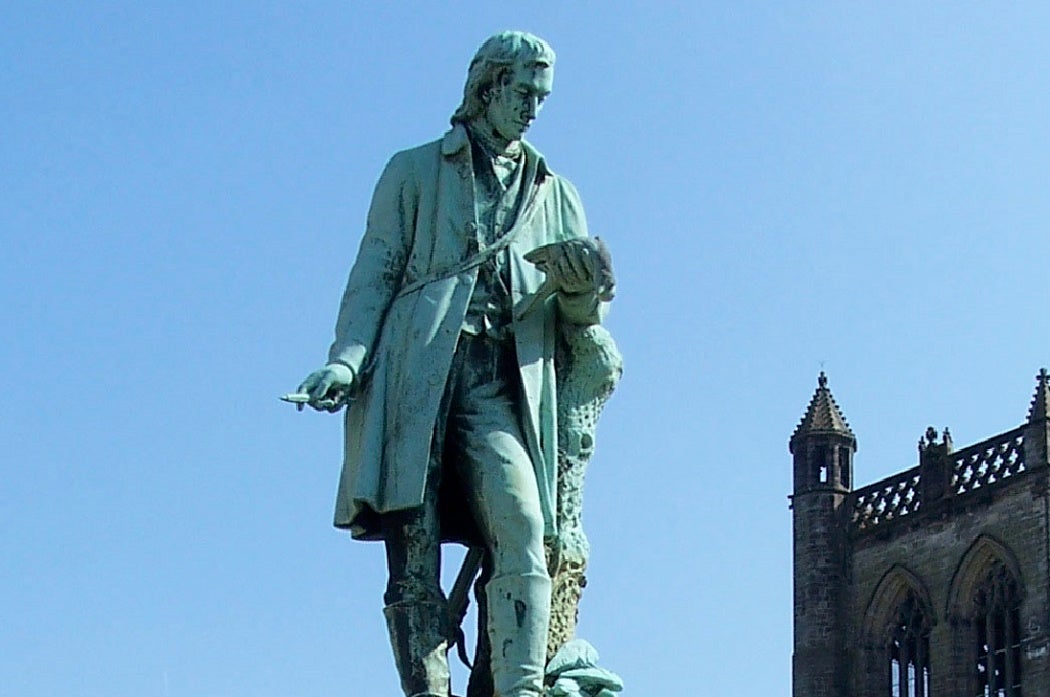Before John James Audubon (1785-1851), there was Alexander Wilson (1766-1813). The “father of American ornithology” was a jack-of-all-trades who came to America in 1794 after stirring up trouble with a poem that incited rebellion amongst his fellow weavers in Scotland. In America, Wilson wrote more poetry and worked as a teacher, surveyor, peddler, and engraver. The most famous naturalist in the young republic, William Bartram (1739-1823), encouraged Wilson in the study of birds.
The result was the first ornithology of American birds, written and illustrated by Wilson and published in Philadelphia in nine volumes between 1807-1814. Wilson died of dysentery, overwork, and chronic poverty during the preparation of the last volume of the series, which ultimately documented over 260 species, 48 of them new to science.
At $120, American Ornithology was prohibitively expensive: 488 individuals subscribed to the project. Notably, one who passed on a subscription was John James Audubon, who was solicited in person by Wilson in Louisville, Kentucky, in 1810.
Laura Rigal approaches Wilson’s groundbreaking work not from a natural history perspective, or the rivalry with Audubon, but from the larger political context. She sees American Ornithology as “an artifact of western expansion and exploration.” Wilson took “the exhibitionary practices of Jeffersonian science on the road,” travelling pretty much everywhere then on the American map, searching for birds as he tried to sell his volumes, and revealing “the deep structure of American federalism as a species of empire.” An empire of birds in an expanding empire of territory.
It was Jefferson, after all, who described the original thirteen colonies and the confederacy formed of them as a “nest from which all America, North and South is to be peopled.” Wilson himself disparaged the “torrid” South, ruled by the Spanish and already peopled, as the place where migrating birds escaped from to raise their young in the “temperate” North.
Rigal also teases out the contradictions of territorial expansion and the displacement of the native population. Wilson decried the wanton shooting of birds, but he also shot plenty himself. He was chagrined, or “disarmed” as he put it, when surviving birds gathered around to stare at the corpses he’s made. He also kept a Carolina Parakeet, an example of the only parrot species native to the U.S., as a pet. The species is now extinct.
Rigal’s essay reminds us that scientific works are always products of their times, and Wilson’s time was quite extraordinary.







